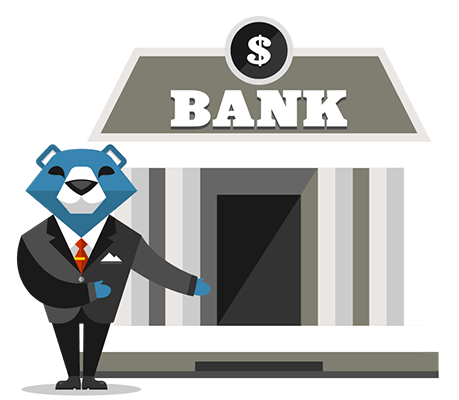Why These Fundamentals Make SpareBank 1 Nord-Norge’s (OB:NONG) More Attractive

SpareBank 1 Nord-Norge’s (OB:NONG) profitability and risk are largely affected by the underlying economic growth for the region it operates in NO given it is a small-cap stock with a market capitalisation of øre6.15b. Given that banks operate by reinvesting deposits in the form of loans, negative economic growth may lower the level of saving deposits and demand for loans, directly affecting those banks’ levels of cash flows. After the Financial Crisis in 2008, a set of reforms called Basel III was created with the purpose of strengthening regulation, risk management and supervision in the banking sector. Basel III target banking regulations to improve the sector’s ability to absorb shocks resulting from economic stress which may expose financial institutions like SpareBank 1 Nord-Norge to vulnerabilities. Unpredictable macro events such as political instability could weaken its financial position which is why it is important to understand how well the bank manages its risk levels. Low levels of leverage coupled with sufficient liquidity may place SpareBank 1 Nord-Norge in a safe position in the face of adverse headwinds. We can measure this risk exposure by analysing three metrics for leverage and liquidity which I will take you through today.
Check out our latest analysis for SpareBank 1 Nord-Norge

Why Does NONG's Leverage Matter?
Banks with low leverage are better positioned to weather adverse headwinds as they have less debt to pay off. A bank’s leverage may be thought of as the level of assets it owns compared to its own shareholders’ equity. Financial institutions are required to have a certain level of buffer to meet capital adequacy levels. SpareBank 1 Nord-Norge’s leverage level of 8.42x is significantly below the appropriate ceiling of 20x. This means the bank exhibits very strong leverage management and is well-positioned to repay its debtors in the case of any adverse events since it has an appropriately high level of equity relative to the debt it has taken on to remain in business. If the bank needs to increase its debt levels to firm up its capital cushion, there is plenty of headroom to do so without deteriorating its financial position.What Is NONG's Level of Liquidity?
 Since loans are relatively illiquid, we should know how much of SpareBank 1 Nord-Norge’s total assets are comprised of these loans. Generally, they should make up less than 70% of total assets, but its current level of 73.61% means the bank has lent out 3.61% above the sensible upper limit. This level implies dependency on this particular asset class as a source of revenue which makes the bank more exposed to defaulting relative to banks with less loans.
Since loans are relatively illiquid, we should know how much of SpareBank 1 Nord-Norge’s total assets are comprised of these loans. Generally, they should make up less than 70% of total assets, but its current level of 73.61% means the bank has lent out 3.61% above the sensible upper limit. This level implies dependency on this particular asset class as a source of revenue which makes the bank more exposed to defaulting relative to banks with less loans. What is NONG's Liquidity Discrepancy?
A way banks make money is by lending out its deposits as loans. These loans may be fixed term and often cannot be readily realized, conversely, on the liability side, customer deposits must be paid in very short notice and on-demand. The disparity between the immediacy of deposits compared to the illiquid nature of loans puts pressure on the bank’s financial position if an adverse event requires the bank to repay its depositors. Relative to the prudent industry loan to deposit level of 90%, SpareBank 1 Nord-Norge’s ratio of over 122.26% is extremely and unsustainably higher, which positions the bank in a risky spot given the significantly high liquidity disparity between loan and deposit levels. Essentially, for NOK1 of deposits with the bank, it lends out more than NOK1.20 which is unsustainable.Next Steps:
We've only touched on operational risks for NONG in this article. But as a stock investment, there are other fundamentals you need to understand. There are three relevant aspects you should further research:
- Future Outlook: What are well-informed industry analysts predicting for NONG’s future growth? Take a look at our free research report of analyst consensus for NONG’s outlook.
- Valuation: What is NONG worth today? Has the future growth potential already been factored into the price? The intrinsic value infographic in our free research report helps visualize whether NONG is currently mispriced by the market.
- Other High-Performing Stocks: Are there other stocks that provide better prospects with proven track records? Explore our free list of these great stocks here.
To help readers see past the short term volatility of the financial market, we aim to bring you a long-term focused research analysis purely driven by fundamental data. Note that our analysis does not factor in the latest price-sensitive company announcements.
The author is an independent contributor and at the time of publication had no position in the stocks mentioned. For errors that warrant correction please contact the editor at editorial-team@simplywallst.com.
Simply Wall St analyst Simply Wall St and Simply Wall St have no position in any of the companies mentioned. This article is general in nature. We provide commentary based on historical data and analyst forecasts only using an unbiased methodology and our articles are not intended to be financial advice. It does not constitute a recommendation to buy or sell any stock and does not take account of your objectives, or your financial situation. We aim to bring you long-term focused analysis driven by fundamental data. Note that our analysis may not factor in the latest price-sensitive company announcements or qualitative material.
About OB:NONG
Undervalued with solid track record and pays a dividend.
Similar Companies
Market Insights
Community Narratives



